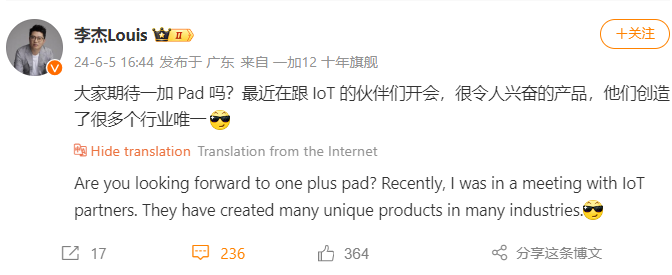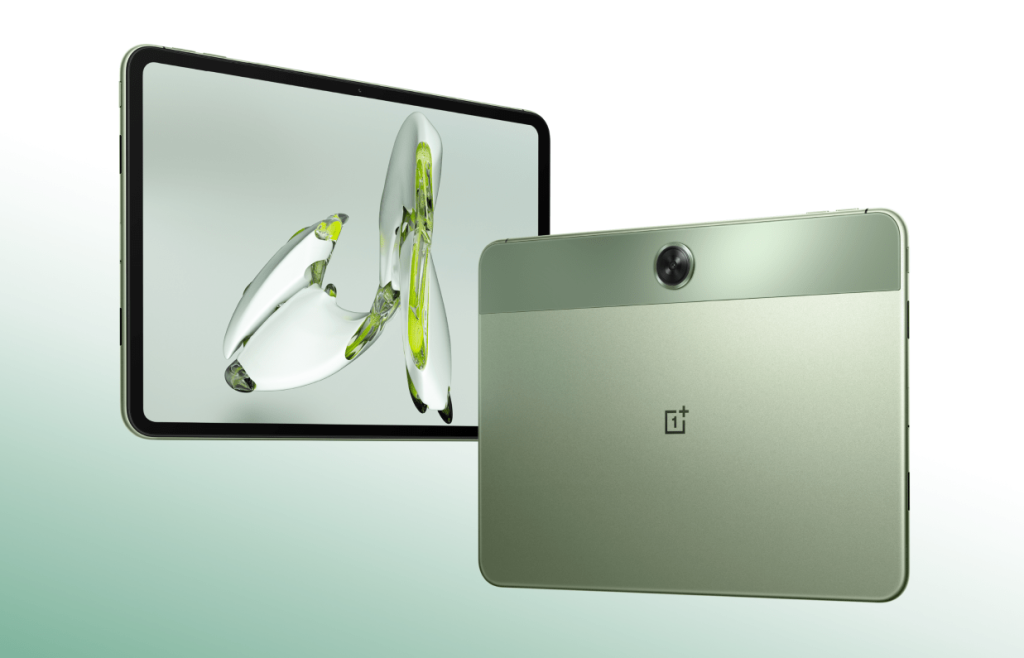Li Jie, President of OnePlus China, recently talked about the upcoming OnePlus Pad 2 in his Weibo (a Chinese microblogging site) post. According to him, the Pad 2 will bring a number of industry firsts. “I was in a meeting with IoT partners. They have created many unique products in many industries,” he wrote. However, he didn’t reveal much about the product himself.

According to a recent rumor, the Pad 2 will come with four storage configurations 8GB+128GB, 8GB+256GB, 12GB+256GB, and 16GB+512GB, and two color options: space gray and fresh khaki green. According to the leak, it could be released as soon as this month.
The device weighs 585 grams, which is slightly heavier as compared to the 552g OnePlus Pad, which was released in April last year.
The OnePlus Pad 2 has already surfaced on Geekbench with model “OP2404” confirming that it will house the latest Snapdragon 8 Gen 3 flagship chipset. This device will surely have an edge in performance compared to its competitors. As the president hinted, the device could come with certain software features that take advantage of the raw power. In comparison, last year’s OnePlus Pad packed the 4nm Dimensity 9000, a flagship chipset that was released towards the end of 2021.

The Snapdragon 8 Gen 3 chipset comes with a Cortex-X4 core clocked at 3.3GHz, 5 x Cortex A720 cores (3 clocked at 3.2GHz, and 2 clocked at 3.0 GHz), and 2 x power efficient Cortex A-520 cores clocked at 2.3GHz. It packs the Adreno 750 GPU. The silicon achieves over 2000 and 7000 points in single and multi-core tests in Geekbench respectively, which is slightly below the Dimensity 9300.
On the outside you will likely see a 12.1″ 3K (3000 x 2120) LCD display that has a pixel density of 304PPI and reaches a peak brightness of 900 nits. The device is reported to boast a 9510mAh battery paired with 67W charging support, which is the exact same as the predecessor. Since the SD 8 Gen 3 is more powerful than the Dimensity 9000 and still based on a 4nm process, it will be interesting to see how the Pad 2’s battery life compares to its predecessor while it introduces some industry firsts.







